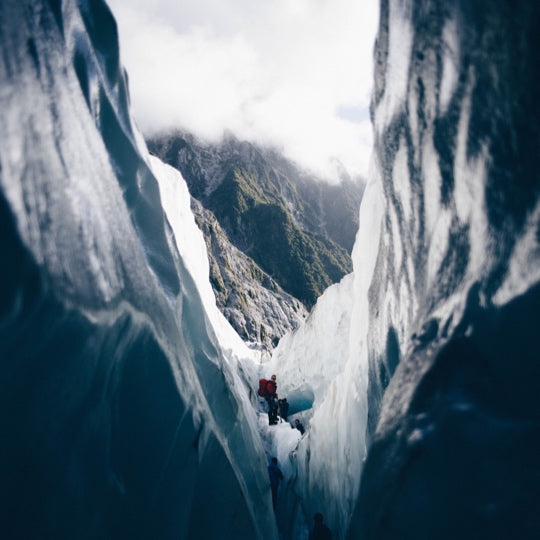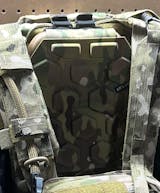So erkennen und verhindern Sie Unterkühlung in diesem Winter


Während ich also in meinem Haus sitze und die Heizung auf 23 Grad hochdrehe, sehe ich nach draußen und sehe, wie die Umgebung mit Schnee bedeckt ist. Dies ist der erste richtige Schneefall der Saison und er verursacht Chaos. Es ist die Art von Schneesturm, bei dem der Verkehr zum Erliegen kommt, Büros geschlossen sind und die Läden Milch und Brot weggefegt haben. Es sind also etwa 7,5 cm. Mit diesem ersten Schnee wird uns klar, dass der Winter kommt, und nur weil es draußen kalt ist, heißt das nicht, dass wir aufhören zu wandern, zu zelten, die Gegend zu erkunden oder draußen in der Kälte zu trainieren. Das bringt mich zum Thema dieses Artikels: Unterkühlung. Nehmen wir uns ein paar Minuten Zeit und sprechen wir über einige Möglichkeiten, wie wir uns besser auf die Kälte vorbereiten, erkennen können, wann Unterkühlung zum Problem wird, und wie wir sie behandeln können.
Hypothermie: Definiert

Machen wir es einfach und bezeichnen es als einen Zustand, in dem die Temperatur im Körper auf unter 35 Grad Celsius abfällt. Ein Abfall der Körpertemperatur kann zu einer Reihe von Symptomen führen, von Schüttelfrost bis hin zum Tod. Wenn Ihr Körper einen Temperaturabfall spürt, versucht er, die Temperatur zu regulieren und wieder anzuheben. Es gibt viele Ursachen für Unterkühlung, und bestimmte Personengruppen sind stärker gefährdet. Es besteht die falsche Vorstellung, dass es draußen kalt sein muss, damit jemand unterkühlt. Es muss einfach kälter sein als Sie selbst. Es gibt viele Umweltfaktoren – Temperatur, Luftfeuchtigkeit, Niederschlag – die die Temperatur in unserem Körper beeinflussen. Kleine Kinder und ältere Menschen sind Gruppen, die leichter von Temperaturschwankungen betroffen sind, da sie die Temperatur nicht so gut regulieren können. Bestimmte Medikamente – Beruhigungsmittel (einschließlich Alkohol), Tranquilizer, Antidepressiva/Antipsychotika und einige Herzmedikamente – können die Fähigkeit Ihres Körpers zur Temperaturregulierung beeinträchtigen und Sie anfälliger für Unterkühlung machen. Auch Menschen mit Erkrankungen wie Multipler Sklerose und Schilddrüsenunterfunktion sind anfälliger für Kälte.
Unterkühlung: Vorbeugung

Vorbereitung ist hier der Schlüssel zum Erfolg. Ich weiß, wir alle wollen raus und die Dinge tun, die wir lieben, und manche von uns planen nicht so viel, wie sie sollten. Etwas so Einfaches wie die Überprüfung der Wettervorhersagen für Ihre Region und die Region, in die Sie reisen werden, kann einen großen Unterschied machen, da es Ihnen dabei helfen kann, die Anzahl und Art der Schichten zu planen, die Sie tragen werden. Das Tragen mehrerer Schichten Kleidung ist wichtig, da Sie die Schichten nach Bedarf entfernen und ersetzen können, um die gewünschte Temperatur aufrechtzuerhalten. Lassen Sie uns auch einen ehrlichen Blick auf die Aufgabe werfen, die wir uns vorgenommen haben, und unsere Fähigkeit, sie zu erreichen. Sie möchten zu dieser 24 km langen Wanderung auf den Berg aufbrechen und dann feststellen, dass Sie außer Atem geraten sind, während Sie Ihre Ausrüstung aus dem Auto holen. Die ganze Ausrüstung wird je nachdem, was Sie mitnehmen, Gewicht bedeuten. Das bringt mich zurück zur Planung. Was brauchen Sie an Nahrung, Wasser, Unterschlupf, medizinischer Versorgung, Kommunikationsausrüstung? Haben Sie eine zusätzliche Decke, Handwärmer, Wasser und ein paar Snacks in Ihrem Auto, falls Sie wegen der drei Zoll Schneehöhe an Ort und Stelle Schutz suchen müssen? Ein guter Schritt in der Planungsphase ist es, einem Freund oder Familienmitglied Ihre Pläne mitzuteilen und zu sagen, wie man Sie am besten erreichen kann. Ich persönlich verwende die PACE- Methode, wenn ich eine Reise irgendwohin plane. Ich habe einen Primärplan , den ich ausgearbeitet habe und der Reise, Essen, Wasser, Unterkunft und Vorräte umfasst. Einen Alternativplan für den Fall, dass die Dinge nicht ganz so laufen, wie ich es mir erhofft habe (was oft vorkommt). Einen Notfallplan für die Zeiten, in denen ein ungeplantes Ereignis (nicht gut, aber auch kein Notfall) eintritt. Und einen Notfallplan für den Fall, dass ich sofort packen, kommunizieren und losfahren muss, möglicherweise aufgrund einer Verletzung oder Krankheit. Das scheint für mich zu funktionieren. Planung ist ein entscheidender Schritt für alle Notfälle und besonders wichtig bei Unterkühlung. Mit der richtigen Planung können Sie sicher und warm bleiben, während Sie Ihre Träume ausleben oder was auch immer Sie lustig und aufregend finden.
Unterkühlung: Anzeichen
Ich weiß, dass nicht jeder, der dies liest, ein Mediziner ist und Hypothermie genau diagnostizieren kann. Ich war einige Jahre Vollzeit-Sanitäter und davor viele Jahre als Rettungssanitäter tätig (falls Sie sich das fragen, bin ich immer noch ein staatlich anerkannter Sanitäter). Die National Institutes of Health und verschiedene andere Behörden verwenden den Ausdruck „Umknicken“, um Menschen dabei zu helfen, die Symptome einer Hypothermie zu erkennen. Dies ist eine großartige Möglichkeit, einige der Symptome einer Hypothermie zu identifizieren, die mit der motorischen Koordination und dem Bewusstseinsgrad zusammenhängen.
- Stolpern – Schwierigkeiten beim Gehen oder Navigieren von Objekten
- Murmeln - Schwierigkeiten, deutlich zu sprechen oder Sätze zu bilden
- Fummeln – Probleme beim Halten von Gegenständen oder beim Benutzen der Hände/Finger
- Grummeln – unverständliche Geräusche wie Grunzen
Die Symptome einer Unterkühlung können auch nach Schweregrad kategorisiert werden:
Leicht – Schüttelfrost, blasse Haut, Mangel an komplexer Koordination
Mäßig – irrationales Verhalten (Kleidung ausziehen/nicht wissen, dass der Person kalt ist), blasse Haut, Verlust der Feinmotorik, starkes Zittern
Schwerwiegend – das Zittern hört auf, man kann nicht mehr gehen, der Herzschlag verlangsamt sich, die Atmung ist unregelmäßig und die Muskeln werden steif
Hypothermie: Behandlung

Was können wir also tun, um jemandem zu helfen, der an Unterkühlung leidet? Nun, es hängt davon ab, wie gut Sie geplant haben und wie kalt die Person ist. Bei Menschen, die Anzeichen einer leichten bis mittelschweren Unterkühlung (einschließlich Erfrierungen) zeigen, können wir unser Bestes tun, um sie wieder aufzuwärmen. Bringen Sie sie nach Möglichkeit an einen vor den Elementen geschützten Ort. Ob es sich um eine Höhle, ein Auto oder ein ausgehobenes Loch an einem Berghang handelt, wir möchten sie vor Regen oder Wind schützen. Ziehen Sie, wenn möglich, zusätzliche Kleidungsschichten an und lassen Sie die Person langsam wieder körperliche Aktivitäten aufnehmen. Sie wird auch Essen und Trinken brauchen, und nein, Alkohol zählt nicht als Getränk. Die Behandlung schwerer Unterkühlung ist etwas schwieriger, aber möglich. Lassen Sie mich zunächst sagen, dass dies ein echter Notfall ist und Sie bereits den Notarzt hätten rufen sollen. Während Sie auf den Rettungsdienst warten, wickeln Sie die Person in etwa 10 cm dickes Material/Kleidung/Decken/Schlafsäcke ein und wickeln Sie sie dann in eine Notfalldecke oder ähnliches ein. Wenn die Person trinken kann, versuchen Sie es mit warmen Flüssigkeiten. Wenn Sie Wärmflaschen oder Wärmekissen haben, können Sie diese in der Nähe der Hauptarterien, des Halses, der Achselhöhlen oder der Leistengegend platzieren, um die Person zu wärmen. Reiben Sie die Haut nicht in irgendeiner Weise, da dies zu weiteren Schäden führen kann.
Unterkühlung bringt ihre eigenen Herausforderungen für Aktivitäten im Winter mit sich. Egal, ob Sie absichtlich draußen sind oder unverschuldet irgendwo gestrandet sind, die richtige Planung und das richtige Wissen können den Tag retten. Dieser Artikel ist in keiner Weise ein Ersatz für medizinisches Wissen und die Nutzung des Rettungsdienstes. Ich schlage vor, dass jeder ein paar Grundkurse besucht, die Themen wie Blutungskontrolle, Atemwegsmanagement, Hitze-/Kältenotfälle und grundlegendes Überleben abdecken. Sie wissen nie, wann Sie auf sich selbst gestellt sein müssen, bis Hilfe eintrifft oder, im Fall von Zombies, nicht eintrifft.
Roger Schiffman, NRP, TP-C
Polizist/Sanitäter – National Institutes of Health
Ausbilder - SOARescue
Referenzen/Zitate :
Nagpal, BM und R Sharma. „Kälteverletzungen: Die Kälte im Inneren“ Medizinische Fachzeitschrift, Armed Forces India, Bd. 60,2 (2011): 165-71.
Nationale Gesundheitsinstitute. „Sicherheit bei kaltem Wetter für ältere Erwachsene“, Nationales Institut für Altern, https://www.nia.nih.gov/health/cold-weather-safety-older-adults
JJustad, MD, DDP. „Hypothermie“, Hypothermie und kältebedingte Verletzungen, Gesundheits- und Sicherheitsrichtlinien, 2015, 1-7. https://dphhs.mt.gov/Portals/85/dsd/documents/DDP/MedicalDirector/Hypothermia.pdf
Curtis, Rick. „Outdoor Action Guide zu Unterkühlung und Verletzungen durch kaltes Wetter“, Outdoor Action, Princeton University, 4.12.2018. https://www.princeton.edu/~oa/safety/hypocold.shtml






Great read! Love the simplicity and easy to remember signs and symptoms. Look forward to reading more of your work!
Great read! Love the simplicity and easy to remember signs and symptoms. Look forward to reading more of your work!
Hinterlassen Sie einen Kommentar